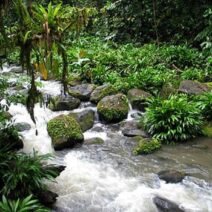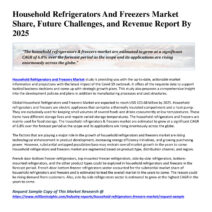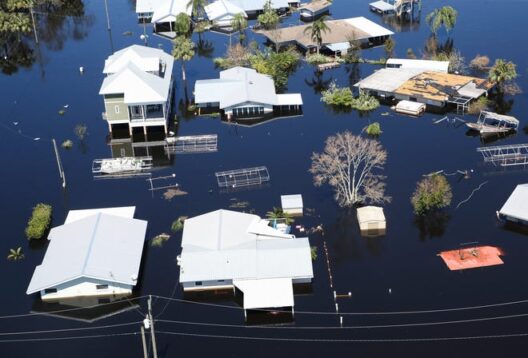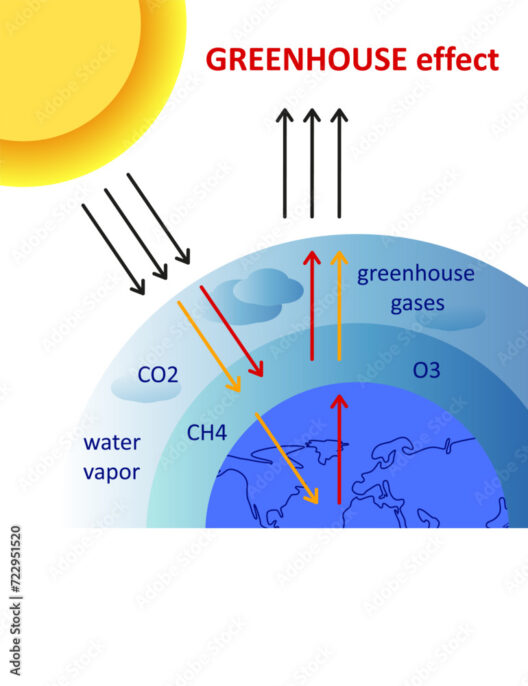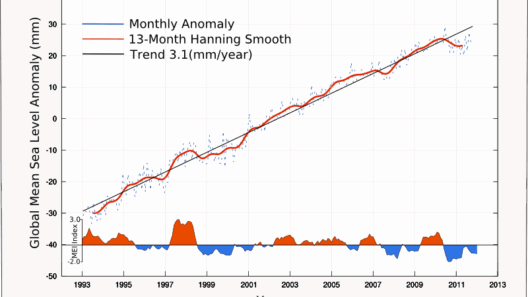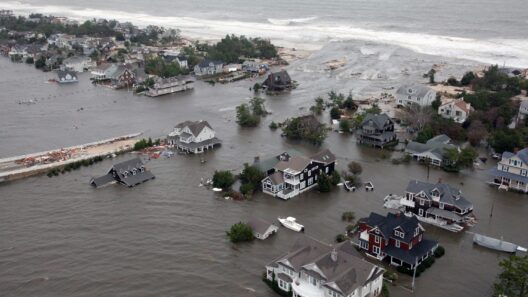The intricate archipelago known as Japan, comprising over 6,800 islands, is renowned for its breathtaking landscapes and vibrant cultures. However, this island nation faces a formidable threat: rising sea levels. This phenomenon, attributed to climate change, is poised to reshape Japan’s coastal cities and ecosystems, leading to multifaceted consequences. Here, we will explore the implications of this environmental challenge and what it means for the future of Japan.
Japan’s coastal regions are home to some of the country’s largest cities, including Tokyo, Osaka, and Yokohama. These urban centers are not only economic powerhouses but also crucial cultural hubs. As sea levels continue to rise, these cities are at risk of experiencing severe flooding, increased erosion, and altered ecosystems.
Understanding the ramifications of rising sea levels necessitates a closer examination of how this environmental shift will affect Japan’s coastal demographics, economy, and ecology.
Coastal Demographic Shifts: Displacement and Migration
One of the most pressing concerns associated with rising sea levels in Japan is the potential for mass displacement. With a significant portion of the population residing in low-lying coastal areas, communities may find themselves in jeopardy as tides encroach upon their homes. Tokyo, for instance, occupies a coastal plain that is particularly vulnerable to flooding. Should sea levels rise substantially, entire neighborhoods could become uninhabitable, prompting a migration crisis.
In essence, a demographic shift may ensue, with citizens relocating from coastal cities to higher ground. This movement would not only disrupt lives and livelihoods but also place unprecedented stress on inland municipalities. The influx of displaced populations may require extensive infrastructure development and social services, often straining already stretched resources. The challenge of accommodating these newcomers could lead to social tensions and exacerbate existing inequalities.
Economic Impact: The Cost of Adaptation
Rising sea levels pose considerable risks to Japan’s economy. Coastal cities are vital, contributing significantly to the nation’s GDP through industry, trade, and tourism. As sea levels rise, the costs associated with adapting existing infrastructure will become astronomical. Investments in sea walls, levees, and enhanced drainage systems are expected to escalate, draining public funds that could otherwise be allocated to education, healthcare, and community services.
Tourism, a revenue stream vital for many coastal cities, may also suffer. Beautiful beaches and picturesque coastal landscapes that attract millions of visitors can be devastated by erosion and flooding. Recreational areas might become less accessible, causing a decline in tourism revenue. Furthermore, industries reliant on coastal resources such as fishing may face immediate threats from the encroaching sea, leading to dwindling fish stocks and economic hardship for local fishermen.
In addition, businesses may struggle to acquire insurance against potential flood damage, leading to increased uncertainty in investment and economic planning. A precarious financial landscape will compel cities to make difficult decisions regarding resource allocation, with long-term implications for growth and stability.
Ecological Consequences: The Disruption of Marine Life
The ecological impact of rising sea levels on Japan’s coastal ecosystems is profound. Saltwater intrusion, a consequence of elevated sea levels, threatens freshwater aquifers essential for drinking water and agriculture. This intrusion could jeopardize food security, driving up costs for staple goods and impacting the rural economy.
Moreover, the delicate balance of marine ecosystems is at stake. Coastal wetlands serve as crucial buffers against storms and act as nurseries for a myriad of marine species. As sea levels rise, these wetlands may be submerged, diminishing their ability to support wildlife and reducing biodiversity. Species that rely on specific habitats may face extinction if conditions alter beyond their adaptability.
Furthermore, coral reefs, often termed the “rainforests of the sea,” are particularly vulnerable to changing conditions. The increased temperature and acidity of ocean waters, combined with rising sea levels, threaten the very existence of these critical ecosystems. As coral reefs degrade, the fish species that depend on them for survival will also be affected, leading to a cascading effect throughout the marine food web.
Innovative Approaches to Resilience
In response to these impending challenges, various innovative approaches are being explored to bolster coastal resilience. Japan has long been a leader in disaster preparedness, owing to its history of natural calamities. Strategies such as restoring natural barriers, including mangroves and wetlands, are gaining traction. These ecosystems not only provide flood protection but also support biodiversity.
Technological advancements will play a pivotal role in a sustainable future. Smart city initiatives employing big data can optimize urban planning, ensuring that new developments consider sea-level rise. Elevating critical infrastructure and employing flexible designs can minimize vulnerabilities. Education and community engagement are equally essential for fostering awareness and collaboration among citizens in adapting to these changes.
The forthcoming decades will bring profound changes to Japan. As rising sea levels threaten coastal cities, immediate action is imperative to safeguard lives, protect livelihoods, and preserve the ecological integrity of this vibrant nation. By understanding the multifaceted implications of this environmental challenge, society can forge a path toward resilience, ensuring a sustainable future for generations to come.
